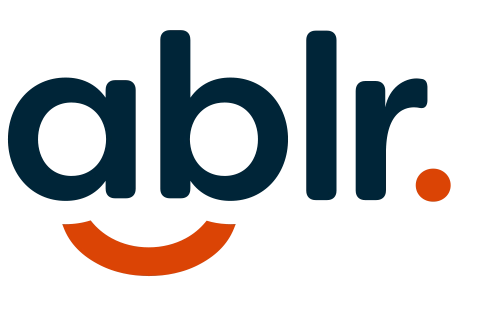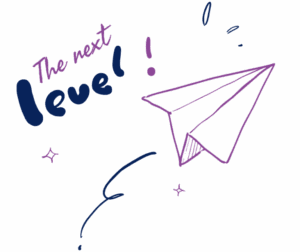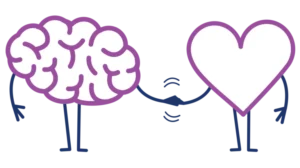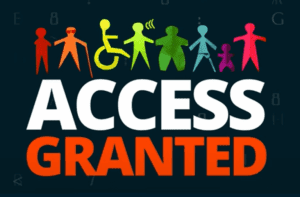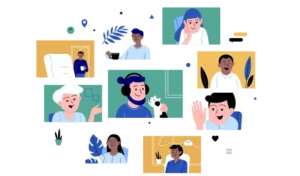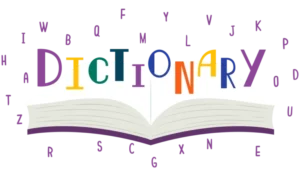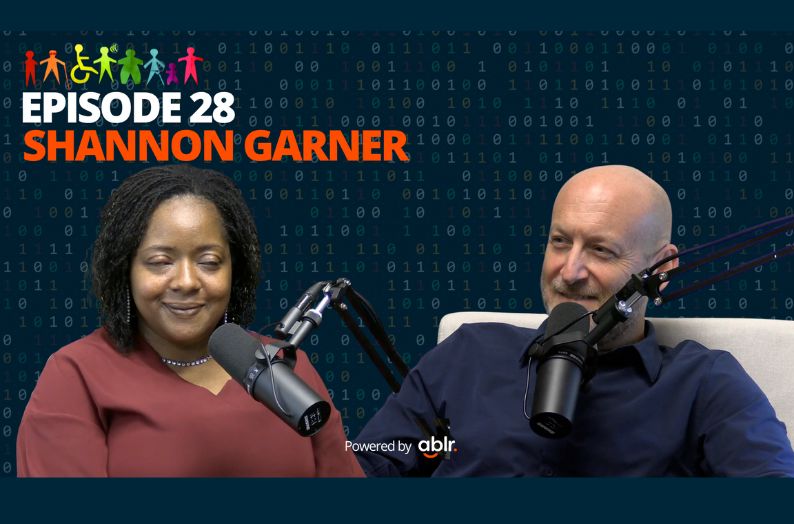Access Granted: Shannon Garner Transcript. Tune in wherever you listen to podcasts
Mike: Welcome to Access Granted, the podcast spotlighting the people reshaping the world through inclusion. I’m your host, Mike Iannelli, and today’s guest is Shannon Garner, Ablr’s Training Specialist and leader of our Accessibility Analyst Program.
Losing her sight at just six years old, Shannon learned early how vital accessibility is not just for independence, but for dignity and opportunity. Now, she doesn’t just teach accessibility, she lives it. I can’t wait for you to meet her.
Welcome Shannon. We just were talking about having you or wanting to have you on the show, the podcast. We’re gonna have a little bit of fun for the next little bit of time. Before we jump into questions, I want you to introduce yourself, tell us a little bit about you, who you are and what you do for Ablr.
Shannon: Hi my name is Shannon Garner. I am the Training Specialist at Ablr. I’m the instructor of the accessibility training course that we have. And I get to teach individuals with the visual impairments as well as create course content.
Mike: You know obviously Ablr is a disability inclusion company, a digital accessibility organization. We not only help organizations make sure their content is usable and accessible for all people, but we also have a training program with multiple different topical areas. And then we have this new training program that Shannon leads is where it’s an accessibility analyst training program. So we work with the Division Services for the Blind.
And we work and recruit individuals with visual impairments and low vision who are looking to make a change in their life. And we bring them in and they’ve gotta go through a rigorous assessment process, but once they get into the program, Shannon takes over and trains them over a 16 week period. We’ve got multiple milestones and it’s really an impactful program, and we’ve seen a lot of great benefits and a lot of great graduates.
We’re also seeing a lot of new employers who are looking for diverse hiring and bringing our folks on full time, which is exciting. So Shannon before we jump in all that, I want to hear a little bit about your background story. Correct me if I’m wrong, you weren’t born with a visual impairment, is that right?
Shannon: That’s right. I had something called Steven Johnson Syndrome at the age of six, and basically what happened is that I had an allergic reaction to the influenza virus. I had a fever that went extremely high and it burned the mucus membranes in my body. So my eyes were basically burned shut. I’m able to open them now because I’ve had several surgeries, but yeah once again, it started long, long time ago at the age of six.
Mike: Six years old. So you’re a 6-year-old kid.
Shannon: Mm-hmm.
Mike: And then you get sick and then you have this tragic situation and you can’t see. But it’s also, you can see a little bit right? Like one of the biggest misconceptions I think all people have, including myself, is that. You’re blind, you’re blind. And that’s not really the case. There’s multiple varying levels of blindness right? Macular degeneration.
Shannon: That’s right.
Mike: You’ve got retinitis pigmentosa, you’ve got glaucoma. I mean, there’s all kinds of, so tell me a little bit about your vision loss and exactly what percentage you can see, if any. And how do you leverage that?
Shannon: I really don’t have a percentage of what I can see. It’s more so of, I see like the full range. The different conditions that you just mentioned, some of them you can only see maybe central vision or the peripheral vision. Me, I see everything. It’s just that it’s blurry.
Mike: Right. Okay.
Shannon: So I can see the fact that I have only this amazing burgundy, red-ish looking dress.
Mike: It does look amazing.
Shannon: So I’m able to see certain things that if I had like two different colors that were similar. Let’s say I had white and then it had like a light gray, it would be hard for me to tell difference unless I have ’em side by side. But I don’t see any details. Like I can’t see your beautiful face Mike, I’m sorry.
Mike: Oh, well, thank you. But you can tell by the voice I guess, right?
Shannon: Yes, yes, of course.
Mike: So do you use a assistive technology or any sort of mobility device?
Shannon: I use assistive technology on a daily basis. My phone, just like everyone else, is like my lifeline. I do use a VoiceOver for work. I use JAWS.
Mike: And explain what JAWS is.
Shannon: JAWS stands for Job Access With Speech. And it’s a screen reader. And basically what it does is as I’m navigating on a screen, as long as the content is created with accessibility in mind first, I’m able to access that with the screen reader. The screen reader will read everything out to me.
Mike: Okay, so you just said something important. As long as the content was created with accessibility. Talk about what that means for the audience.
Shannon: So what I mean by as long as the content is created in with accessibility in mind is that a lot of times, unfortunately things are not created with accessibility in mind. So therefore we just focus on what we can see. As long as we can see it, then, hey, good.
But we have to understand that people perceive digital content in different ways. So a person who has sight. Like I said, I can see the content, but we need to make sure that, that content is in the form where someone who’s blind like myself using the screen reader is able to also perceive that information.
So if it’s a picture of text, which is a big no, no. I’m not able to read that with my screen reader. Yes, that screen reader does have superpowers built into it, so technically I am, but it’s not accessible. That’s the screen reader making up that gap. Why do that when we can have people actually create content?
Don’t use pictures of text. Use regular text. Don’t use similar colors. Like I said before, with white and light gray. Use a big contrast, white and black, dark pink on white or something of of that nature.
Mike: So there’s a wide range of accessibility features and function. I think in some ways what you’re saying is that a lot of content today, a significant amount of content isn’t accessible for people with disabilities, especially with folks with visual impairments, right?
Shannon: Yeah.
Mike: So the screen reader is there to help read what’s on the screen, but at the screen, and the content wasn’t created with accessibility in mind. Things like the read order or the H1 tagging situation, or it’s not functional with a keyboard. Because folks with a visual impairment use a keyboard to function on the site for shortcuts.
And so if the content’s not there, the screen reader’s helpful. But if it’s reading stuff, that’s all jiggered and jaggered and all over the place it’s very confusing and leaves you in a position. We used to call it the abyss. It’s like, I don’t know what to do next. I’m not, you’re not leading me through the process or the experience. You’re just talking me through and completely mis-communicating what the content has to offer.
Shannon: Exactly.
Mike: Let’s talk a little bit about that, because that’s such an important piece, right? So when you were growing up you were six, but do you remember when screen readers came out and what the impact was for your life?
Shannon: I think one of the advantages that I did have is that I lost my sight at a younger age right? So I wasn’t really aware of everything that I would need to access as an adult, like bills and etcetera. But what I’m saying is that I remember going to school and there being what we call the Resource room. And I was introduced to Braille.
I wasn’t really introduced to screen reader. At first it was that big clunky braille writer that we love so much ’cause it’s old but reliable. And I was introduced to that. And then I remember maybe around the age of eight is when I started actually using a computer. And I believe, I can’t quite remember it’s been a long time, the name of that speech output. I think it was like Outspoken, Spoken Outloud, something like that. But I didn’t really use the screen reader until I turned what 15?
Mike: Okay.
Shannon: Everything else was Braille.
Mike: So you learned Braille. So that’s another misconception.
Shannon: Yeah.
Mike: The other misconception is that every person that has a visual impairment, low vision is a Braille user.
Shannon: Not true.
Mike: And that’s not the case at all.
Shannon: Not at all. Because we have to understand that people with disability is the largest minority group. That means that people lose their sight at different ages. You can’t expect someone who may be in their fifties to go and learn Braille. I mean, I’m not saying it’s impossible, but I’m just saying. If they are already life-ing and they lose their sight, that’s another thing that added to it. You can’t really expect for that person to know Braille like someone who grew up with it, like I said.
Mike: Yeah, understandable. Is it also just because of modern technology that Braille is just not easily or readily available or just not used as much?
Shannon: Braille is everywhere. We don’t realize it though.
Mike: Okay. Explain.
Shannon: Because, okay so when you go into a big office building downtown
Mike: Mm-hmm.
Shannon: And you go into the elevator, what do you see on the buttons?
Mike: Okay, I do see that yep.
Shannon: Right. When you go to one of these huge conferences and you’re in a hotel and you walking down the aisle and you see the little plaques on the door, what do you see?
Mike: I do see Braille. Yeah.
Shannon: When you go into a public restroom on the sign, what do you see? Braille.
Mike: This is good.
Shannon: So Braille is everywhere. So I don’t think that speech output will ever replace Braille. I think it’s an awesome tool, but at the same time I think different tools are good for different people.
Mike: Understandable. So, yeah and I think that we talk a lot about misconceptions and what we do is such a component of education right? And that’s always been the challenge is generating awareness around this right? Because there’s always often this, we don’t have people that are our targets or we don’t know anybody, or it’s such a small percentage when in fact it’s not a small percentage.
I mean, we were talking about a billion people globally that have a disability. And when you start to think about business case and 8 trillion in buying power. And then obviously with the use of assistive technology today and the evolution of technology, folks with disabilities have more access than they’ve ever had before, as we all do.
They have more opportunities than they’ve ever had before. So the world is really changing and it’s sort of, this is the time to get on board. Would you agree?
Shannon: I agree. And I want to always raise awareness of accessibility because it’s not just for people with disabilities, accessibility is for everyone.
Mike: I agree. So explain that.
Shannon: For an example. Because I like to speak in examples. Let’s talk about a person who’s in a wheelchair.
Mike: Mm-hmm.
Shannon: Let’s say we’re in downtown Raleigh.
Mike: Mm-hmm.
Shannon: Right? And we need to cross the street. We have what are called curb cuts, right?
Mike: Mm-hmm.
Shannon: People think, oh those are for wheelchairs, but no, not necessarily. Right? What about a mom with a brand new baby? What about a bicyclist?
Mike: So talk about the digital side of that too though right? ’cause you talk about websites now all of a sudden they can be read.
Shannon: Yeah.
Mike: But there’s a usability component of it right?
Shannon: Yeah.
Mike: And there’s so many other benefits that we say accessibility for everyone. But what does that mean to you?
Shannon: So like I said before and when I stated that people with disabilities are the largest minority group. At some point in your life you are going to have a disability. It’s gonna happen.
Mike: Mm-hmm.
Shannon: Right. Let’s take a step back from that. Let’s say that you’re in your car, the sun is shining down on your phone. You’re not driving of course, but you’re just sitting there and you wanna check some emails while you are waiting for your fast food delivery. I don’t know. I’m just making something up.
Mike: That’s a good example.
Shannon: And you are looking down at your phone. What if the sun is glaring on your phone right?
Mike: Yeah.
Shannon: If that was light pink text on a white background, do you think you’d be able to see it?
Mike: No. So it’s contrast issues. It’s contrast.
Shannon: But if I have black texts on a white background, it’s gonna pop and you’re gonna still be able to see it.
Mike: So your education has been a radical shift. So one of the things that, that Ablr does, it’s all about upward mobility right? Finding like-minded organizations that want to hire diverse people that changed the game when they come in and offer a whole new perspective.
You joined LCI years ago. You were working on the floor, and then you met John. And John said, Hey I wanna do something with digital accessibility. And boom you became an analyst. All of a sudden you went from working the floor to being an analyst. Now where are you now? You’re the lead trainer of our largest growing program right now.
Shannon: Yes.
Mike: So what does that feel like and share that, because again, growing up you probably had concerns that, hey I’m not gonna be able to do this. Or the culture today doesn’t believe in what I can do. And all of a sudden you’re living proof.
Shannon: Yeah.
Mike: Talk about that living proof and what that means. ‘Cause there’s a lot of people out there listening to the program. That wanna learn more about how they can replicate this sort of path that you’ve created for yourself?
Shannon: It feels amazing because as you mentioned, I was working on the manufacturing floor. I did go over to, at that time LCI Tech and was working with John, right?
But I left and went back to the manufacturing and John came and got me. And he said, basically you’re unemployed here. I want you to come back and work for me, would you? And I said sure.
Mike: And what does you see transpire over the last few years since LCI Tech became another organization?
Shannon: Yeah. It’s Ablr now, yeah.
Mike: And then boom. I mean what kind of radical shift have we seen over the last four years?
Shannon: The biggest shift that I see is taking Ablr and now wanting to share the information that we know to other individuals out there who are also visually impaired. So the workforce development program that we have now, which gave me the opportunity of becoming who I am today. And I’m happy in the position that I’m in. Well I’m very joyful inside because I’m able to not only teach individuals with visual impairments, but I’m also a person with a visual impairment. So therefore I’m able to tell them, listen if I can do it, I’m sitting here and I’m teaching you, you can do this. You can do this.
Mike: And that makes a major difference. ’cause again if these folks were coming in and it was a sighted individual trying to educate them on this program, it probably wouldn’t resonate as much.
Shannon: Right.
Mike: And so now you’re in the position of going from the floor to becoming an analyst and learning all about accessibility. Because when we first started, you were tester, you tested all the content out. Then you’ve upward mobility now you’re leading the charge with our training. But when individuals come into that and they see that, hey Shannon has a visual impairment. Shannon has upward mobility. That’s gotta be inspiring and motivating for individuals to say, I can get there too.
Shannon: Exactly.
Mike: That must feel good.
Shannon: It was wonderful.
Mike: So let’s talk about what’s been going on with the program because it’s evolved quite a bit now.
Shannon: Oh my goodness. Yeah so much. So much.
Mike: Yeah tell me.
Shannon: We are in cohort six and seven. So six and seven means that we have two going at the same exact time. We have never had that before. We’re now gonna be offering four different sessions of what I teach a year. So if you’re interested, please join.
Mike: And explain what you teach again.
Shannon: I teach digital accessibility, so I help prepare folks to take their CPACC certification, and I also teach the basics of digital accessibility. I teach about the core principles and how to apply them.
Mike: And they are?
Shannon: Perceivable, Operable, Understandable, and Robust.
Mike: There you go. There you go. And why is that? Why is that important? Why do those principles exist?
Shannon: Because those are the foundations of accessibility. Content must be perceived by all individuals regardless of their disability. Content must be operable, meaning if I’m a person that uses a keyboard only, I should be able to access the information just like someone who uses a mouse. Maybe someone who uses a sip and puff device.
Whatever device I choose to use to access digital content it must be operable to me. Content must be understandable. So easy to understand. I shouldn’t need a PhD in physics to understand a webpage right?
Mike: Yep, true.
Shannon: It must be easy. It must be predictable. It must be readable. The language should be there. The language should be determined in the code. Form should be clear enough to where if I’m filling them out right. I will not make any mistakes and content must be robust, meaning that no matter what type of technology I used from the past, the present or the future, I still should be able to access this content.
Mike: Right on. So talk to me a little bit about, you said cohort six and seven.
Shannon: Yeah.
Mike: And obviously the program’s changed quite a bit. It’s not an easy program. You don’t just walk in and get in because you have a visual impairment. You’ve gotta earn your way in.
Shannon: That’s absolutely right.
Mike: And going through that assessment process. And so when you think about the number of students that were starting to filter through the program.
Shannon: Yes.
Mike: What are you hearing about the impact? What are the positive stories you’re hearing about the program? From our graduates and our current candidates.
Shannon: You know, of course, during the process they always say, this is so hard. This is so much. It’s a lot Shannon, it’s a lot. And I always tell them, trust me at the end it is going to be worth it. And the proof is in the pudding, right?
Mike: Are you the pudding?
Shannon: Like banana pudding.
Mike: I’m thinking more tapioca, but you’re saying the proof is in the pudding because you’ve gone through it, you’ve done it.
Shannon: I’ve gone through it. But then they come back and they say, you know what Shannon, you are right. You are right. And especially when they get the first job offer and they feel that true independence. Whether they’re reentering the workforce. Or just joining for the very first time.
Mike: Well joining in the very first time in a new career path.
Shannon: Yeah.
Mike: One that’s more than just, Hey you can go do this. Because that’s what we believe that all you’re capable of doing. But now we’ve got education. Because the program isn’t just about the CPACC right? It’s not about that. We do upskilling.
We get soft skills training, and then we’ve got a job developer on staff who’s sitting right next to me. And talk about motivating.
It’s like, hey we’re gonna not only take you through the training and prep you with an individual who’s been there done that. We’re also gonna get you ready for the workforce in terms of interviewing, preparation, and resume creation and LinkedIn profile building. And there’s all sorts of components.
So this is like a one stop shop.
Shannon: Yes.
Mike: For changing lives of people with low vision and visual impairments.
Shannon: It’s like Target..
Mike: Speaking of Target, I need to hit that up. But I mean that’s really the full scale of the program.
Shannon: Yeah exactly.
Mike: And so where do you see the program going in the future? How do you see it evolving?
Shannon: I see it keeping up with the new technology, the new digital content out there. Also just expanding through all over the country. Because right now we’re just in a select number of states. But I want this to go national. I want it to go international, and I also want it to open up for not just people with the visual impairments, but people with all different types of disabilities. And even if you don’t have disability and you want to learn, come on.
Mike: Yeah.
Shannon: We welcome you. The more awareness out there about people with disabilities, the more inclusive we can be.
Mike: Yeah. So if you had a couple things you could say that people that are listening, and maybe they might be organizations or might be potential students coming in. Like what are things that you want them to know about the community you want them to know about the Ablr organization?
But some misnomer, some things that say I’ve been visually impaired since I was six years old. Like it’s time for us to get on board. It’s time for us to understand the impact that all people can have.
Shannon: Yeah.
Mike: What would you share with ’em?
Shannon: It’s time for a door, a new door to be open. Come and join us because you are going to be a part of an amazing community, an amazing support system that’s going to help you with every single step of the way.
Mike said it, from when you come in and do your assessment to the day you graduate, to the day you get a job. ’cause this is what it’s all about. You joining that workforce we’re here for you. Basically you, you’re never by yourself.
You can reach out to me, reach out to anyone on the team. There’s always someone there.
Mike: Yeah. And the other component of that is the flip side. So we’re training these individuals, we’re preparing them for the workforce, but we also work with organizations to prepare them as well. Because onboarding individuals that they’ve never hired before, it’s a process. It’s not a crazy process, it’s just understanding what the technology needs might be, understanding what accommodations might be. But it’s also making sure that their organization is trained in terms of etiquette and inclusive language.
Shannon: Yes.
Mike: And understanding. How do we sort of incorporate this new sort of shift in the way we’re looking at our organization from a resource perspective, but it also incorporates accessibility because we’re training people in accessibility.
And what better way than making sure that your digital content’s accessible? So when they go to apply for a job, they can actually do it?
Shannon: Yes.
Mike: And we, again, it’s more, I’m gonna say this all the time, it’s more than compliance, right? Compliance is just, hey I wanna protect myself from a lawsuit.
Shannon: Mm-hmm.
Mike: There’s a different line of that versus accessibility and usability and universal design. So all people, all humans that live on this planet can access the content precisely the same way based on the tools that they have.
Shannon: People first .
Mike: Ablr people first. Well said Shannon. Anything else you want to add in today’s lovely conversation, which I’m so grateful you to be here.
Shannon: Oh no. This was great, Mike. Thank you for this opportunity. If you’re out there and you are listening to this and you’re thinking about a career change or if you’re thinking about just joining the workforce, try Ablr.
Mike: And Shannon, thank you for being here. And I’ll say this. You know I remember the days when it was just John and I, you and Angus, and Sarah. And to see how far we’ve come from one account to over 200 accounts, to five people, to over 15 people. And now this internship program, and then we’ve got this training program and we’re looking at expanding into multiple states and adding new content. For certification programs, and there’s a lot of mojo and momentum going on and to see you grow from the day I met you to where you are now, it’s truly inspiring. And I just think you’re doing amazing work, so thank you for everything you do.
Thanks for tuning into this episode of Access Granted with Ablr’s own Shannon Garner. Her journey reminds us that accessibility isn’t abstract, it’s personal. It’s about clarity, opportunity, and making sure no one’s left behind. And the real takeaway? Accessibility doesn’t just level the playing field, it opens new ones. I’m Mike Iannelli and I’ll see you next time on Access Granted.
